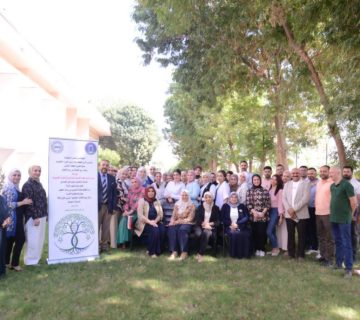The Institute of Genetic Engineering and Biotechnology for Postgraduate Studies at the University of Baghdad discussed the Higher Diploma report of student Khansa Safaa Abdul Jabbar, titled:
“Favism: Symptoms, Causes, and Management,” under the supervision of Professor Dr. Majid Shayea Hamdallah.
Objectives of the Study:
The study aimed to:
🔹 Define Favism, including its symptoms, physiological, and genetic causes.
🔹 Explain the physiological mechanisms of Vicine and Convicine compounds.
🔹 Highlight the relationship between fava bean consumption and Favism disease.
🔹 Review methods to reduce Vicine and Convicine levels, which are responsible for triggering Favism.
Key Findings:
🔹 Favism is a hereditary form of hemolytic anemia caused by a deficiency in the G6PD enzyme. This deficiency can lead to a sudden destruction of red blood cells, resulting in hemolytic anemia and jaundice after consuming fava beans.
🔹 Favism is a widespread disease, affecting 400–600 million people worldwide. It is more common in males than females and is diagnosed more frequently in children than in adults. Additionally, infants can develop symptoms if their mothers consume fava beans during pregnancy or breastfeeding.
Recommendations:
- There is a correlation between populations with a high prevalence of G6PD deficiency genes and regions where fava bean consumption is common.
- G6PD plays a crucial role in producing the reduced form of glutathione, which is essential for maintaining and protecting red blood cells.










